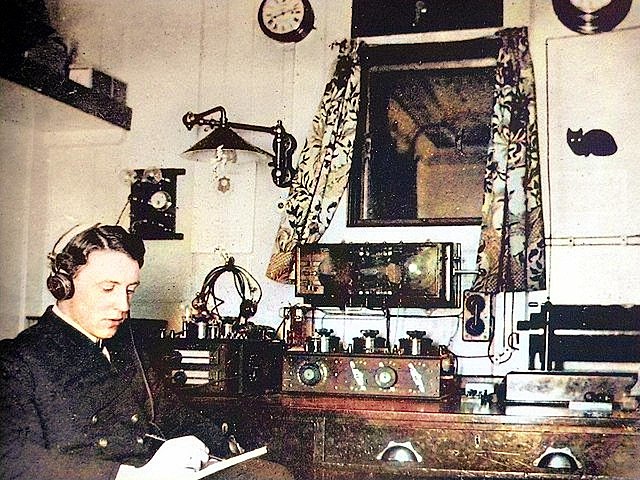With congressional passage of the Radio Act of 1912, the U.S. government entered the regulatory realm of radio.
Although this medium is clearly covered by the speech protection of the First Amendment, both the nature of this technology and its widespread availability to people (including children) who cannot read have continued to raise unique First Amendment issues that were reflected in this early legislation.
Earlier radio law created radio interference problems
The 1912 law was preceded by the Wireless Ship Act of 1910, but a key flaw was that it did not allocate radio frequencies, and as a result, interference over the airwaves remained a major problem in wireless communications.
The impetus for passage of the Radio Act of 1912 was the sinking on April 15, 1912, of the passenger ship Titanic about 370 miles southeast of Newfoundland.
Radio interference prevented prompt relay of Titanic emergency signal broadcast

In this photo, the British liner Titanic sails out of Southampton, England, at the start of its doomed voyage on April 10, 1912. The ship struck an iceberg and sank on April 14-15, killing more than 1,500 of the 2,200 people aboard. Radio interference from amateur radio operators delayed the Titanic’s distress signal. This disaster led to the creation of the Radio Act of 1912 which gave the government control over the broadcast spectrum. (AP Photo, used with permission from the Associated Press)
For Congress, this disaster was an example of what could happen when technology developed faster than regulation. The emergency signal broadcast by wireless operators on board the ship was received by a Marconi telegraph station in Newfoundland, but, as the news broke, amateur radio operators up and down the U.S. East Coast filled the airwaves with radio noise that prevented the distress signal from being relayed promptly.
There was adequate radio communication, but the proper procedures, including monitoring the frequency and recognizing the priority of emergency traffic, were lacking.
Radio Act of 1912 took control of broadcast spectrum, began regulation
In the 1912 act, the government for the first time seized control of the broadcast spectrum and assumed responsibility for its allocation among various uses and users.
The act provided for the licensing of radio operators, a separate frequency for distress calls, absolute priority for distress calls, and 24-hour radio service for ships at sea. The act also required all amateur radio broadcasters to be licensed, and it prohibited them from broadcasting over the main commercial and military wavelengths.
Spectrum scarcity has been used to justify disparate treatment of First Amendment-protected broadcast speech
The Supreme Court has consistently allowed the federal government to impose content-based regulations on broadcast communications while finding similar regulations constitutionally offensive when applied to print communications.
Because the broadcast spectrum is finite and considered to be public-owned, the Court has used spectrum scarcity to justify this disparate treatment of otherwise protected speech.
Spectrum scarcity is based on the theory that because the broadcast spectrum is limited and is a valuable public resource, government intervention is required to protect this resource by restricting who may use it and how. The public, not the broadcasters, have a collective right of access to information.
This article was originally published in 2009. Sharon L. Morrison was the Library Director at Southeastern Oklahoma State University.

